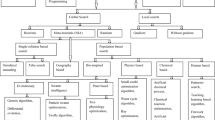Abstract
In this study the Taguchi method is used to find the optimal process parameters for aluminium foam manufacturing. Porous metals are the unique materials used for light weight structural components, for filters and electrodes and for shock or sound absorbing products. Recently, interesting foaming technology developments have proposed metallic foams as a valid commercial chance. Metallic foam manufacturing techniques include solid state powder methods, gas blowing processes, metal deposition onto a polymer precursor and liquid state processing. The aluminium foams presented in this study are produced by the powder metallurgy route starting from aluminium powders with titanium hydride as the foaming agent. During the experimental work, many samples are made by utilizing the combination of process parameters based on Taguchi orthogonal design. Three manufacturing parameters are studied: the silicon carbide content in powder mixture, the compaction pressure and the foaming temperature. The Taguchi method is applied to design an orthogonal experimental array and a multi-objective optimization approach is then proposed by simultaneously minimizing the relative density and maximizing the absorbed energy. Verification test is also performed to prove the effectiveness of the presented technique.




Similar content being viewed by others
References
Banhart J (2001) Manufacture, characterisation and applications of cellular metals and metal foams. Prog Mater Sci 46:559–632
Baumeister J et al (1992) US Patent 5(151):246
Allen BC et al 81963) US Patent 3,087,807
Fraunhofer Institute, FOAMINAL® Properties overview and design guideline, Product data sheet. Available via http://www.ifam.fraunhofer.de
Taguchi G (1990) Introduction to quality engineering. Mc Graw-Hill, New York
Nalbant M, Gokkaya H, Sur G (2007) Application of Taguchi method in the optimization of cutting parameters for surface roughness in turning. Mater Design 28:1379–1385
Yang WH, Tarng YS (1998) Design optimization of cutting parameters for turning operations based on the Taguchi method. J Mater Process Tech 84:122–129
Vijian P, Arunachalam VP (2006) Optimization of squeeze cast parameters of LM6 aluminium alloy for surface roughness using Taguchi method. J Mater Process Tech 180:161–166
Shabeer S, Wang MY (2006) Multi-objective optimization of sequential brakeforming processes. J Mater Process Tech 102:266–276
Jaishi B, Ren WX (2007) Finite element model updating based on eigenvalue and strain energy residuals using multiobjective optimisation technique. Mech Syst Signal Pr 21:2295–2317
Ghani JA, Choudhury IA, Hassan HH (2003) Application of Taguchi method in the optimization of end milling parameters. J Mater Process Tech 145:84–92
Olabi AG, Casalino G, Benyounis KY, Hashmi MSJ (2006) An ANN and Taguchi algorithms integrated approach to the optimization of CO2 laser welding. Adv Eng Softw 37:643–648
Ko D, Kim D, Kim B (1999) Application of artificial neural network and Taguchi method to preform in metal forming considering workability. Int J Mach Tool Manu 39:771–785
Yang HJ, Hwang PJ, Lee SH (2002) A study of shrinkage compensation of the SLS process by using the Taguchi method. Int J Mach Tool Manu 42:1203–1212
Benouali AH, Froyen L, Delerue JF, Wevers M (2002) Mechanical analysis and microstructural characterisation of metal foams. Mater Sci Tech 18:489–494
Gembicki FW (1974) Vector optimization for control with performance and parameter sensitivity indices, Dissertation. Case Western Reserve University, Cleveland
Acknowledgement
Financial support from research project PRIN 2006 – TILAS (Innovative Manufacturing Technologies for Metal Foams) is acknowledged.
Author information
Authors and Affiliations
Corresponding author
Rights and permissions
About this article
Cite this article
Surace, R., De Filippis, L.A.C., Ludovico, A.D. et al. Application of Taguchi method for the multi-objective optimization of aluminium foam manufacturing parameters. Int J Mater Form 3, 1–5 (2010). https://doi.org/10.1007/s12289-009-0409-9
Received:
Accepted:
Published:
Issue Date:
DOI: https://doi.org/10.1007/s12289-009-0409-9




